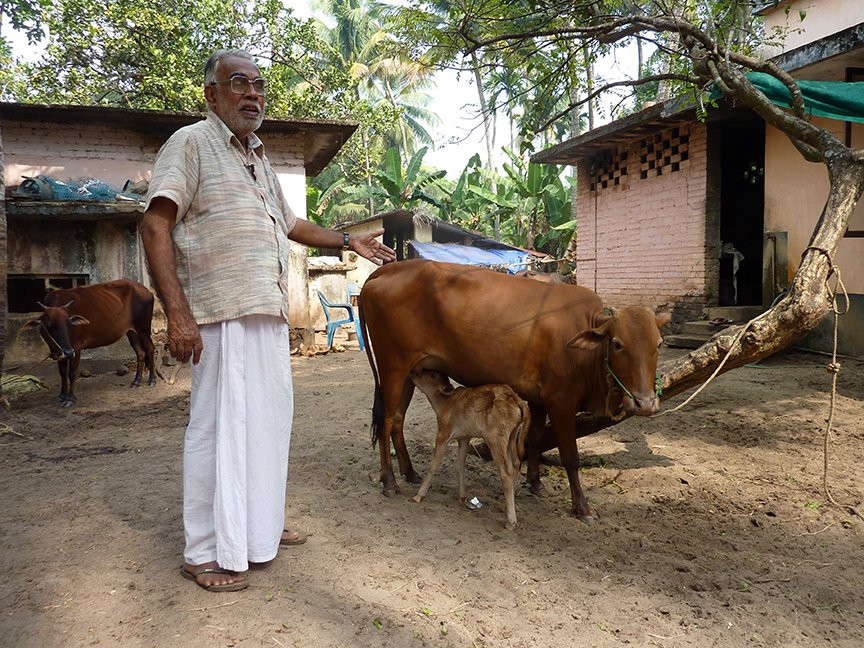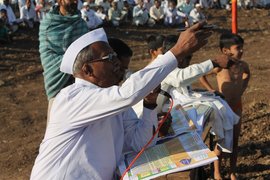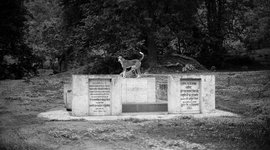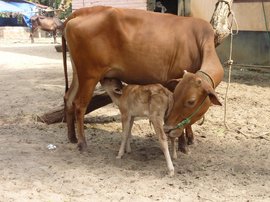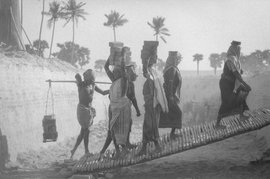Visitors flow in and out of Chandran Master's compound in P. Vemballur village in Thrissur, Kerala. Students, teachers, trainees in animal husbandry work and even officials walk around like it's a public space. And in some ways, it is. People come a distance to see his 22 cows and two bulls – mostly from rare indigenous breeds. Also, the many kinds of mango, bamboo and fish he has cultivated, again species native to India. The former English teacher also boasts a classic Kathiawari horse and several native breeds of poultry. But the star attractions are the tiny Vechur – the world's smallest cow – and other dwarf varieties of Kerala cattle.
The visitors' interest also reflects a growing concern in the state about the fate of domestic breeds of cattle and other livestock. Like elsewhere, a strong emphasis on crossbred cattle that aimed at higher milk production also saw a sharp decline in native animals. There is now a serious debate on the results of that approach. Kerala's cattle population declined by around 48 per cent between 1996 and 2007.
Dr. R. Vijayakumar, Director of Kerala's Animal Husbandry Department (AHD), says the state's new breeding policy “limits exotic [that is, non-native] germplasm to 50 per cent of cattle. We are now also propagating native breeds. We even conduct artificial insemination with the semen of native bulls.” And while the number of animals may have fallen between 1996 and 2007, “milk productivity of cows in the state rose in that period. From an average of six litres a day to 8.5 litres, even as crossbreeds came to account for 87 per cent of Kerala's cattle.”
However, the cost of milk production is much higher with the crossbreeds. The feed requirement of native dwarf breeds like Vechur and Kasargode are very minor. Their feed-to-milk conversion is very good. The crossbreeds are high-maintenance animals and are disease-prone. “See this Vadakara Dwarf,” says Chandran Master. “I doubt I spend five to ten rupees on her feed daily. Still she gives me three to four litres. But the quality of her milk is highly prized and I could get Rs. 50 a litre for it. So even in that way, the benefit is greater. There is no high standard of feed required either. Kitchen scraps and leftovers can be used. And they don't require special sheds or anything.” He, however, does not sell milk. He does sell “very few calves each year when the numbers exceed my capacity to manage.”
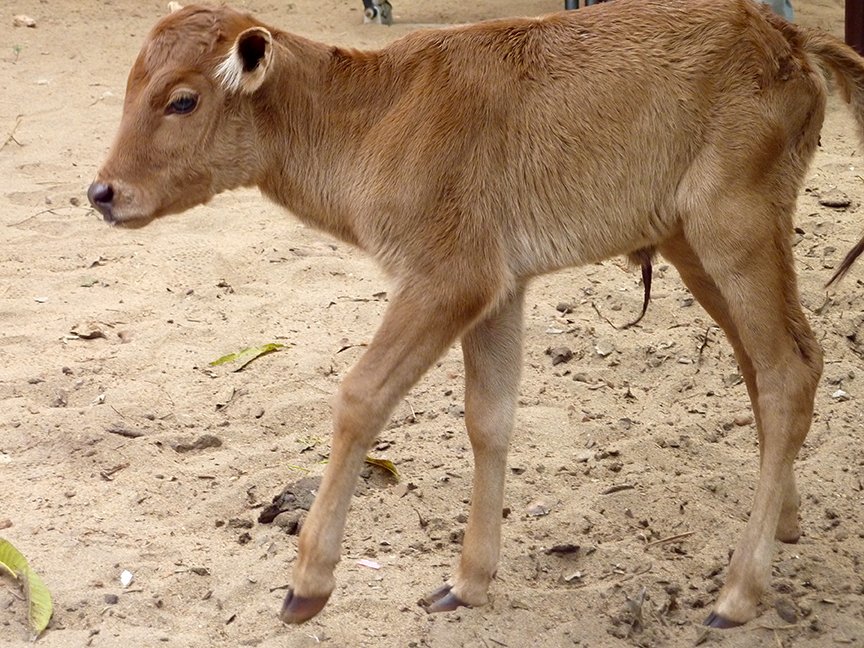
The world's youngest Vechur calf, born just six hours before this photo was taken
Of the Vechur, he says its milk has medicinal qualities recorded by Ayurveda ages ago. In more recent times, studies at the Kerala Agricultural University (KAU) have also shown the percentage of fats and total solids of the Vechur cow to be higher than that found in crossbred cows. The smaller size of the fat globules in the Vechur's milk makes it more suitable for infants and the sick.
AHD Director R. Vijayakumar says the decline of native species had many causes. Not just the castrations of “nondescript” varieties that had occurred in a much earlier period. He points to “the trend towards cash crops, which brought about a decline in animal-based agriculture and to a younger generation of farmers with no time or patience for rearing large animals – they prefer smaller ruminants. And to a greater interest in crossbreeds due to their higher milk productivity.”
But costs and maintenance are another matter. “Before I switched to local breeds in 1994,” says Chandran Master, “I had three crossbreds, including one Swiss Brown. I had to spend up to Rs. 400 a day on each. The feed was very costly and over Rs. 200 a day. Pellet feed, rice powder, wheat powder, oil cake, green grass, it's endless. They would fall ill all the time and the vet was here every week, with each visit costing me Rs. 150 apart from the expense of arranging a vehicle for him.”
Since making his switch: “No vet has attended my cows for 17 years. And I have not even insured a single one of them. These are hardy, healthy creatures.” And several experts do point out that India's native cattle ( bos indicus ) have evolved to cope with the climate and to “withstand diseases, parasites and calve easily without human assistance.” Scientists like Prof. Sosamma Iype, who pioneered the revival of the Vechur at KAU, also point out that these dwarf animals “have good resistance to foot-and-mouth disease and mastitis. Both diseases which plague crossbred cows in Kerala. Vechur cattle also have a far lower incidence of respiratory infections.”
Most livestock owners in Kerala are either small or marginal farmers or even landless. The state has the highest percentage of crossbreeds in the country. And while its average milk yield has risen, production is far below demand. Kerala is not amongst the top producers in the country. Feed utilisation per litre of milk is also one of the highest in India. Critics say it's wrong to ignore the steep fall in cattle numbers and native breeds that has hurt Kerala, alongside decades-old policies that made it illegal for a farmer to keep any bull without a licence for it. That licence is only granted at the level of state director of the AHD.
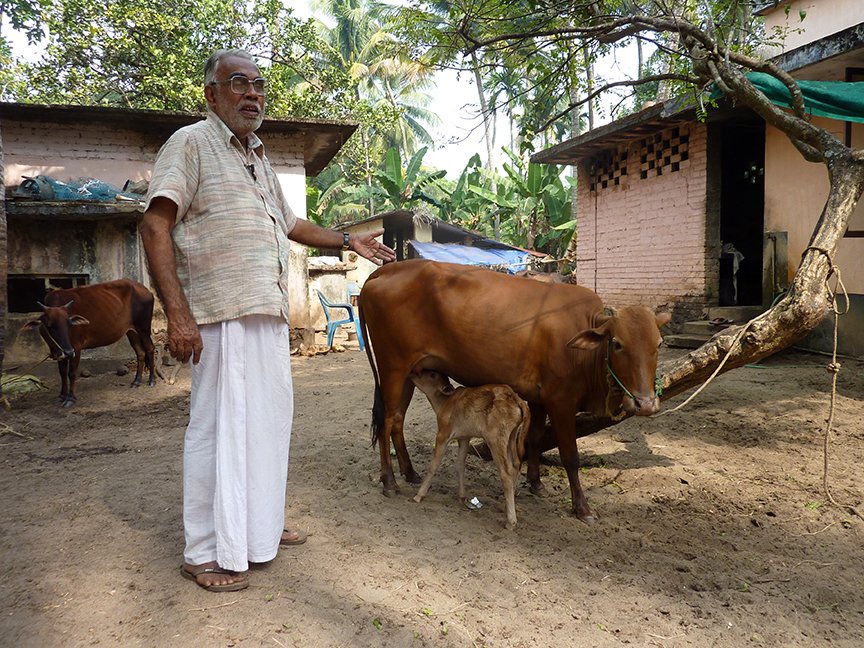
Chandran Master with the Vechur mother and child
Technically, Chandran Master and others are breaking the law. But surely the state has no way of knowing whether a farmer is keeping an “illegal” bull? “A hostile panchayat can make life hell for a farmer,” says one expert. “If that farmer is at odds with the ruling outfit of that panchayat, they can keep him in court for months.”
Haritha Bhoomi ( Green Earth ), a journal on agriculture, recently summed up the red tape involved in permissions of any kind: Say a farmer wishes to exceed the limit of six large animals and 20 head of poultry, even by a minor number. He needs clearances from the panchayat to just start the process. If you exceed the quota, you have to go to the Pollution Control Board. Depending on the size of the establishment you wish to build, you will need certificates from the District Town Planner. Perhaps even from the State Chief Town Planner. Manage to get these done and you have to prepare a technical report for the panchayat and get three or four certificates from them. Then the farmer must get clearances from the district medical officer to whom he has to submit NOCs from all residents within 100 metres of his planned farm.
On my first visit to Chandran Master's home I had run into a Livestock Inspector from another region. Wishing to remain unnamed, he told me: “On most of my visits I see the problems faced by the crossbreeds. They fall ill with the slightest change in climate. They cannot take the heat.” Chandran Master chipped in: “You cannot sleep one night peacefully. Crossbreds can't stand 10 minutes of rain. With local breeds, you don't even need cowsheds.” The inspector nodded: “If I keep a cow, it will be a Vechur.”
Postscript: Following part one of this story in The Hindu , the Sahabhagi Vikash Abhiyan, a community-based body deeply involved in Kalahandi's agriculture, has announced it will gift Chandran Master two calves of the rare Khariar breed. The challenge now is to transport them from western Odisha to Thrissur in Kerala.
This article was originally published in The Hindu on January 6, 2012 .
